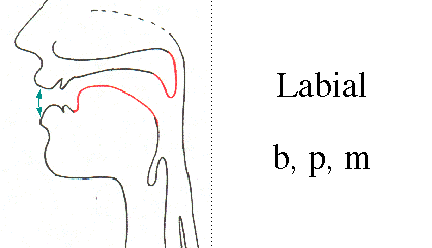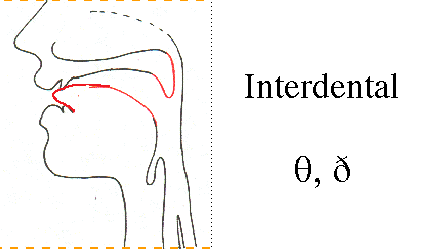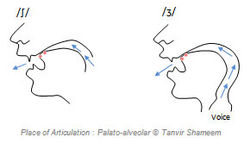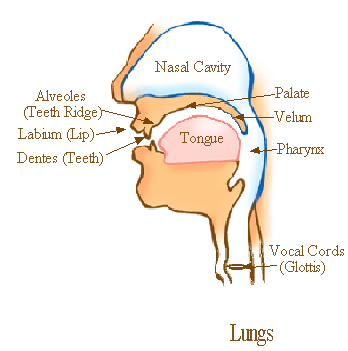

WELCOME !
 phonology-vs-phonetics-1-728.jpgPHONOLOGY Is the basis for further work in morphology, syntax, discourse, and orthography design. Analyzes the sound patterns of a particular language by determining which phonetic sounds are significant, and explaining how these sounds are interpreted by the native speaker. PHONETICS Is the basis for phonological analysis. Analyzes the production of all human speech sounds, regardless of language. |  consonants-1sm.jpgPhonetics and phonology are worth studying for several reasons. One is that as all study of language, the study of phonology gives us insight into how the human mind works. Two more reasons are that the study of the phonetics of a foreign language gives us a much better ability both to hear and to correct mistakes that we make, and also to teach pronunciation of the foreign language (in this case English) to others. As phonetics and phonology both deal with sounds, and as English spelling |  sagital.facial (1).jpgPlaces of Articulation. As we saw above [p,t,k] are all voiceless, so there must be another way to distinguish between them, otherwise we would not be able to tell try apart from pry or cry, or pick from tick or kick . Apart from the behaviour of the vocal folds, sounds can also be distinguished as to where in the oral cavity they are articulated (i.e. where in the mouth there is most obstruction when they are pronounced) |
|---|---|---|
 labial.gifBilabial sounds are produced when the lips are brought together. Examples are [p], which is voiceless, as in pay or [b] and [m] which are voiced, as in bay, may. |  labiodental.gifLabiodental sounds are made when the lower lip is raised towards the upper front teeth. Examples are [f] safe (voiceless) and [v] save (voiced). |  interdental.gifDental sounds are produced by touching the upper front teeth with the tip of the tongue. Examples are [S] oath (voiceless) and [C] clothe (voiced). |
 palatal.gifPalatal sounds are very similar to palatoalveolar ones, they are just produced further back towards the velum. The only palatal sound in English is [ j] as in yes, yellow, beauty, new and it is voiced. Palatal = the front or body of the tongue raised to the palatal region or the domed area at the roof of your mouth. In our ASCII phonetic alphabet, these are the voiceless [S] and the voiced [Z] |  palato-alveolar.jpgPalatoalveolar sounds are made by raising the blade of the tongue towards the part of the palate just behind the alveolar ridge. |  velar (1).gifVelar = the back of the tongue raised to the soft palate ("velum"), the area right behind the palate. As with bilabials, English has a limited range of velar consonants. But these are sometimes pronounced in words borrowed into English from languages which do have velar fricatives, e.g. from German, Bach. The last sound below (looks like a long tail on the letter "n") is the [N] in our ASCII phon |
 Glottal sounds are produced when the air passes through the glottis as it is narrowed: [h] as in high. A glottal stop is a speech sound articulated by a momentary, complete closing of the glottis in the back of the throat. It exists in many languages, as in English and Hawaiian uh-oh, O'ahu, and ka'aina. |
Phonetics and phonology
Whereas syntax is about sentence formation, and semantics about sentence
interpretation, phonetics and phonology cover the field of sentence utterance.
Phonetics is concerned with how sounds are produced, transmitted and perceived (we
will only look at the production of sounds). Phonology is concerned with how sounds
function in relation to each other in a language. In other words, phonetics is about sounds of
language, phonology about sound systems of language. Phonetics is a descriptive tool
necessary to the study of the phonological aspects of a language.
Phonetics and phonology are worth studying for several reasons. One is that as all
study of language, the study of phonology gives us insight into how the human mind works.
Two more reasons are that the study of the phonetics of a foreign language gives us a much
better ability both to hear and to correct mistakes that we make, and also to teach
pronunciation of the foreign language (in this case English) to others.
As phonetics and phonology both deal with sounds, and as English spelling and
English pronunciation are two very different things, it is important that you keep in mind that
we are not interested in letters here, but in sounds. For instance, English has not 5 or 6 but 20
different vowels, even if these vowels are all written by different combinations of 6 different
letters, "a, e, i, o, u, y". The orthographic spelling of a word will be given in italics, e.g.
please, and the phonetic transcription between square brackets [pli:z]. Thus the word please
consists of three consonants, [p,l,z], and one vowel, [i:]. And sounds considered from the
phonological point of view are put between slashes


BINGO






